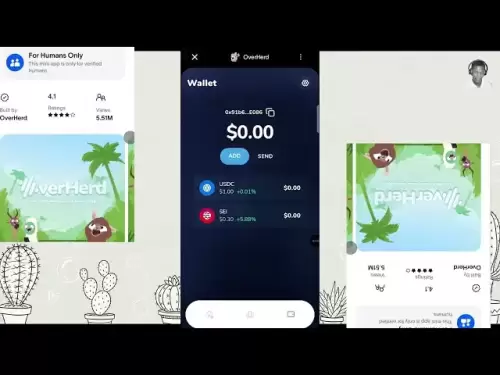-
 Bitcoin
Bitcoin $113600
-0.89% -
 Ethereum
Ethereum $3589
-2.33% -
 XRP
XRP $2.932
-4.03% -
 Tether USDt
Tether USDt $1.000
0.03% -
 BNB
BNB $749.6
-1.98% -
 Solana
Solana $163.0
-3.40% -
 USDC
USDC $1.000
0.02% -
 TRON
TRON $0.3322
-0.70% -
 Dogecoin
Dogecoin $0.1980
-4.93% -
 Cardano
Cardano $0.7186
-4.54% -
 Hyperliquid
Hyperliquid $37.47
-2.40% -
 Stellar
Stellar $0.3903
-5.01% -
 Sui
Sui $3.390
-4.44% -
 Bitcoin Cash
Bitcoin Cash $554.6
-3.01% -
 Chainlink
Chainlink $16.20
-4.35% -
 Hedera
Hedera $0.2354
-5.05% -
 Ethena USDe
Ethena USDe $1.001
0.01% -
 Avalanche
Avalanche $21.79
-4.49% -
 Litecoin
Litecoin $118.6
-2.39% -
 UNUS SED LEO
UNUS SED LEO $9.003
0.58% -
 Toncoin
Toncoin $3.166
-6.57% -
 Shiba Inu
Shiba Inu $0.00001200
-3.59% -
 Uniswap
Uniswap $9.486
-4.51% -
 Polkadot
Polkadot $3.596
-2.54% -
 Dai
Dai $1.000
0.01% -
 Monero
Monero $289.7
-3.54% -
 Bitget Token
Bitget Token $4.271
-2.32% -
 Cronos
Cronos $0.1386
-0.92% -
 Pepe
Pepe $0.00001007
-5.23% -
 Aave
Aave $253.1
-4.66%
What is an uncle block and its reward mechanism?
Uncle blocks in Ethereum, though not part of the main chain, enhance network security by rewarding miners, promoting decentralization.
Apr 10, 2025 at 11:49 pm

An uncle block, also known as a stale block, is a block in the Ethereum blockchain that is not part of the main chain but is still valid and contributes to the security of the network. Understanding uncle blocks and their reward mechanism is crucial for grasping the intricacies of Ethereum's proof-of-work (PoW) consensus algorithm. In this article, we will delve into the concept of uncle blocks, their significance, and how they are rewarded.
What is an Uncle Block?
An uncle block is a block that is mined and broadcast to the network but does not become part of the main blockchain. This occurs when two miners solve the cryptographic puzzle almost simultaneously, but one block is added to the chain before the other. The block that is not included in the main chain becomes an uncle block.
Uncle blocks are important because they help to increase the security of the Ethereum network. By rewarding miners for these blocks, Ethereum incentivizes more miners to participate, which in turn makes the network more decentralized and secure.
How are Uncle Blocks Created?
Uncle blocks are created due to the decentralized nature of the Ethereum network. When miners solve the cryptographic puzzle required to mine a block, they broadcast their solution to the network. However, due to network latency and the time it takes for information to propagate, it is possible for multiple miners to find a solution at roughly the same time.
- If Miner A and Miner B both solve the puzzle at the same time, but Miner A's block reaches the majority of the network first, Miner A's block is added to the main chain.
- Miner B's block, although valid, is not included in the main chain and becomes an uncle block.
This scenario is more likely to occur in a decentralized network where miners are geographically dispersed and connected through various nodes.
The Role of Uncle Blocks in Ethereum
Uncle blocks play a crucial role in the Ethereum network. They help to mitigate the centralization risks associated with mining pools and ensure that smaller miners can still participate and earn rewards.
By rewarding uncle blocks, Ethereum encourages miners to continue mining even if they are not part of large mining pools. This helps to maintain a more decentralized network, which is essential for the security and integrity of the blockchain.
The Reward Mechanism for Uncle Blocks
The reward mechanism for uncle blocks in Ethereum is designed to compensate miners for their efforts, even if their block is not included in the main chain. The reward for an uncle block is calculated based on several factors, including the block number and the number of uncles included in the block that references it.
- The base reward for an uncle block is 7/8 of the full block reward. For example, if the full block reward is 2 ETH, the base reward for an uncle block would be 1.75 ETH.
- The reward decreases as the uncle block becomes older. Specifically, the reward is reduced by 1/8 for each block that is mined after the uncle block but before it is included in the main chain.
- The maximum age of an uncle block that can still be rewarded is 6 blocks. If an uncle block is older than 6 blocks, it will not receive any reward.
To illustrate, if an uncle block is included in the main chain 2 blocks after it was mined, the reward would be 1.75 ETH - (2 1/8 1.75 ETH) = 1.4375 ETH.
How to Include Uncle Blocks in the Main Chain
Miners can include uncle blocks in the main chain by referencing them in the blocks they mine. This process is known as "including uncles" and is an important part of the Ethereum mining process.
- When a miner mines a new block, they can include up to two uncle blocks in the block header.
- The miner must provide the hash of the uncle block and the number of the block that the uncle block was mined at.
- Including uncles helps to increase the miner's reward, as they receive an additional 1/32 of the full block reward for each uncle included.
For example, if a miner includes one uncle block in their new block, they would receive an additional 1/32 of the full block reward on top of their standard block reward.
The Impact of Uncle Blocks on Network Security
Uncle blocks have a significant impact on the security of the Ethereum network. By rewarding miners for these blocks, Ethereum ensures that smaller miners can still participate and earn rewards, which helps to maintain a more decentralized network.
A more decentralized network is less susceptible to 51% attacks, where a single entity controls the majority of the mining power. By incentivizing smaller miners, Ethereum reduces the risk of centralization and enhances the overall security of the network.
Practical Example of Uncle Block Rewards
To better understand how uncle block rewards work, let's consider a practical example. Suppose the current block reward is 2 ETH, and a miner finds an uncle block. If the uncle block is included in the main chain 3 blocks after it was mined, the reward calculation would be as follows:
- Base reward for the uncle block: 7/8 2 ETH = 1.75 ETH
- Reduction due to age: 3 1/8 1.75 ETH = 0.65625 ETH
- Final reward for the uncle block: 1.75 ETH - 0.65625 ETH = 1.09375 ETH
If the miner who mined the block that included the uncle also included another uncle block, they would receive an additional 1/32 2 ETH = 0.0625 ETH for each uncle included.
Frequently Asked Questions
Q: Can a miner include more than two uncle blocks in a single block?
A: No, according to the Ethereum protocol, a miner can include a maximum of two uncle blocks in a single block.
Q: What happens if an uncle block is older than 6 blocks?
A: If an uncle block is older than 6 blocks, it will not receive any reward. The Ethereum protocol sets a maximum age of 6 blocks for uncle blocks to be eligible for rewards.
Q: How does the inclusion of uncle blocks affect the overall block reward for a miner?
A: Including uncle blocks can increase a miner's overall block reward. For each uncle block included, the miner receives an additional 1/32 of the full block reward, which can significantly boost their earnings.
Q: Are uncle blocks unique to Ethereum, or do other blockchains have similar concepts?
A: Uncle blocks are specific to Ethereum's proof-of-work consensus algorithm. Other blockchains may have similar concepts, such as "orphan blocks" in Bitcoin, but the specific mechanics and rewards can differ.
Disclaimer:info@kdj.com
The information provided is not trading advice. kdj.com does not assume any responsibility for any investments made based on the information provided in this article. Cryptocurrencies are highly volatile and it is highly recommended that you invest with caution after thorough research!
If you believe that the content used on this website infringes your copyright, please contact us immediately (info@kdj.com) and we will delete it promptly.
- DeriW Mainnet: Zero Gas Fees Revolutionize On-Chain Derivatives Trading
- 2025-08-06 10:30:11
- IOTA, Cloud Mining, and Eco-Friendly Crypto: A New York Investor's Take
- 2025-08-06 10:30:11
- Kaspa (KAS) Price Prediction: August 6 - Will It Break Free?
- 2025-08-06 10:50:12
- Meme Coin Mania: Arctic Pablo's Token Burn Ignites Presale Frenzy
- 2025-08-06 10:50:12
- Pi Network, Holders, and Market Turbulence: Navigating the Crypto Storm
- 2025-08-06 10:55:12
- XRP, DOGE, and the Altcoin Darling Dilemma: Where's the Alpha?
- 2025-08-06 08:30:11
Related knowledge
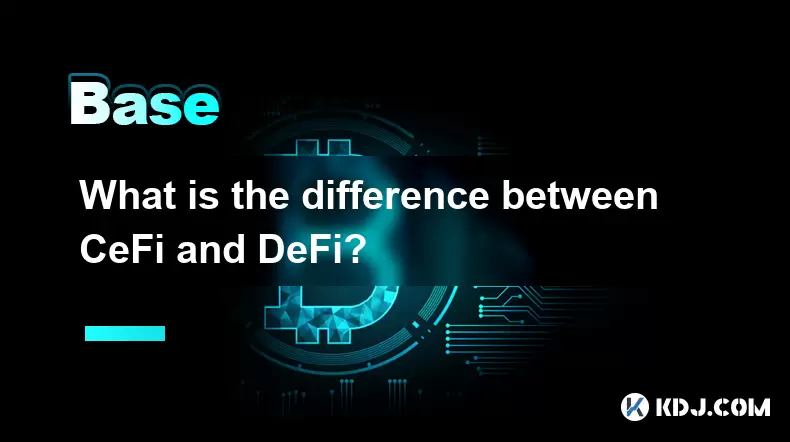
What is the difference between CeFi and DeFi?
Jul 22,2025 at 12:28am
Understanding CeFi and DeFiIn the world of cryptocurrency, CeFi (Centralized Finance) and DeFi (Decentralized Finance) represent two distinct financia...
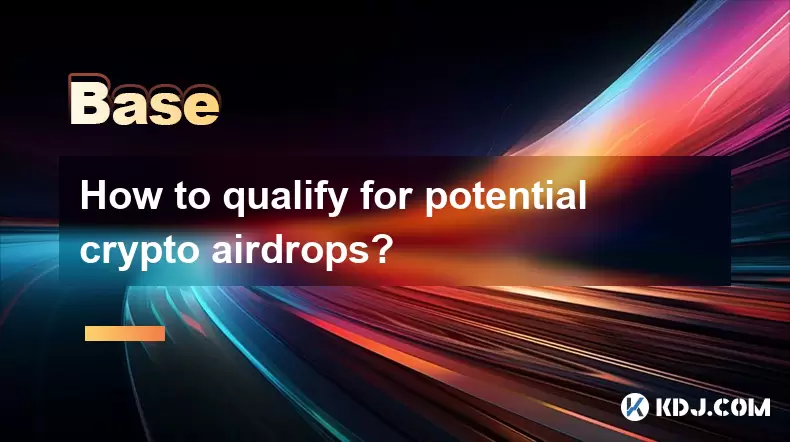
How to qualify for potential crypto airdrops?
Jul 23,2025 at 06:49am
Understanding What Crypto Airdrops AreCrypto airdrops refer to the distribution of free tokens or coins to a large number of wallet addresses, often u...
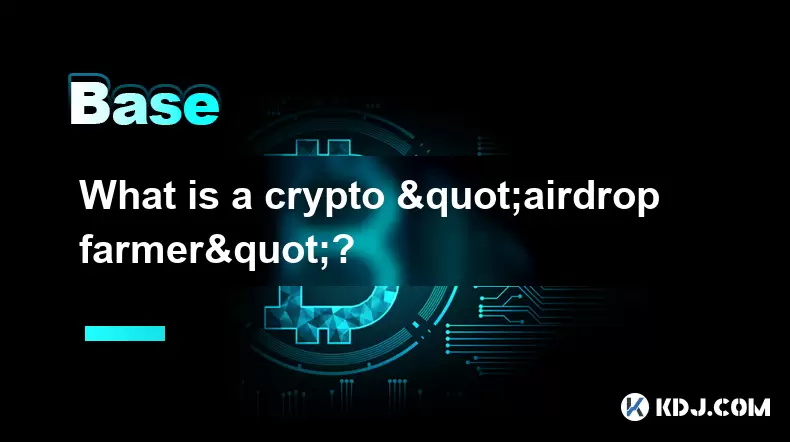
What is a crypto "airdrop farmer"?
Jul 24,2025 at 10:22pm
Understanding the Role of a Crypto 'Airdrop Farmer'A crypto 'airdrop farmer' refers to an individual who actively participates in cryptocurrency airdr...
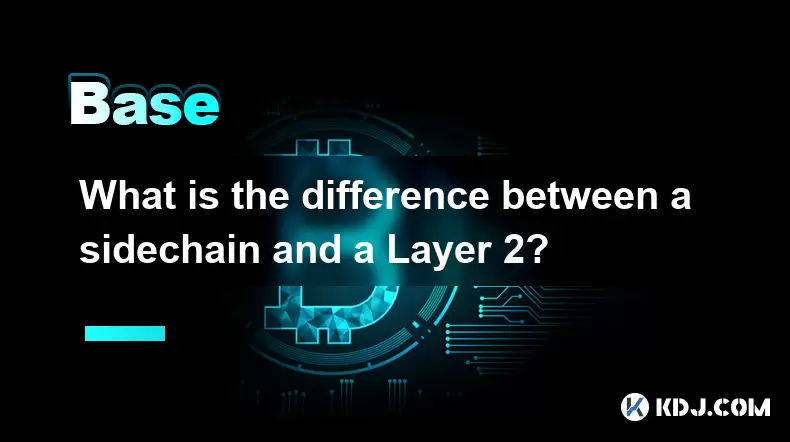
What is the difference between a sidechain and a Layer 2?
Jul 20,2025 at 11:35pm
Understanding the Concept of SidechainsA sidechain is a separate blockchain that runs parallel to the main blockchain, typically the mainnet of a cryp...
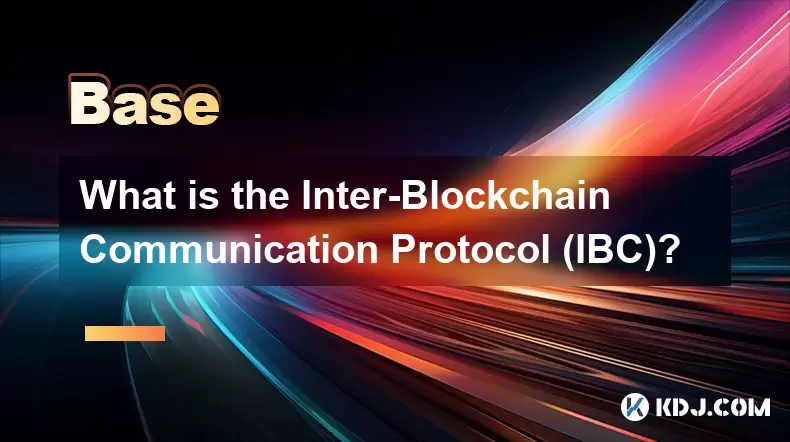
What is the Inter-Blockchain Communication Protocol (IBC)?
Jul 19,2025 at 10:43am
Understanding the Inter-Blockchain Communication Protocol (IBC)The Inter-Blockchain Communication Protocol (IBC) is a cross-chain communication protoc...
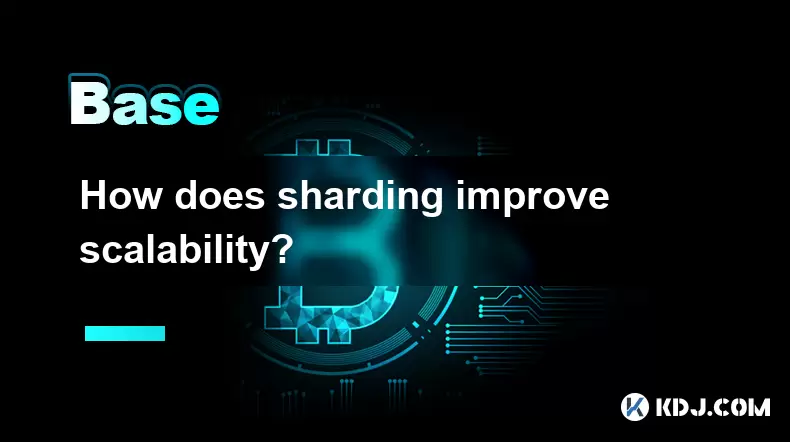
How does sharding improve scalability?
Jul 20,2025 at 01:21am
Understanding Sharding in BlockchainSharding is a database partitioning technique that is increasingly being adopted in blockchain technology to enhan...

What is the difference between CeFi and DeFi?
Jul 22,2025 at 12:28am
Understanding CeFi and DeFiIn the world of cryptocurrency, CeFi (Centralized Finance) and DeFi (Decentralized Finance) represent two distinct financia...

How to qualify for potential crypto airdrops?
Jul 23,2025 at 06:49am
Understanding What Crypto Airdrops AreCrypto airdrops refer to the distribution of free tokens or coins to a large number of wallet addresses, often u...

What is a crypto "airdrop farmer"?
Jul 24,2025 at 10:22pm
Understanding the Role of a Crypto 'Airdrop Farmer'A crypto 'airdrop farmer' refers to an individual who actively participates in cryptocurrency airdr...

What is the difference between a sidechain and a Layer 2?
Jul 20,2025 at 11:35pm
Understanding the Concept of SidechainsA sidechain is a separate blockchain that runs parallel to the main blockchain, typically the mainnet of a cryp...

What is the Inter-Blockchain Communication Protocol (IBC)?
Jul 19,2025 at 10:43am
Understanding the Inter-Blockchain Communication Protocol (IBC)The Inter-Blockchain Communication Protocol (IBC) is a cross-chain communication protoc...

How does sharding improve scalability?
Jul 20,2025 at 01:21am
Understanding Sharding in BlockchainSharding is a database partitioning technique that is increasingly being adopted in blockchain technology to enhan...
See all articles























